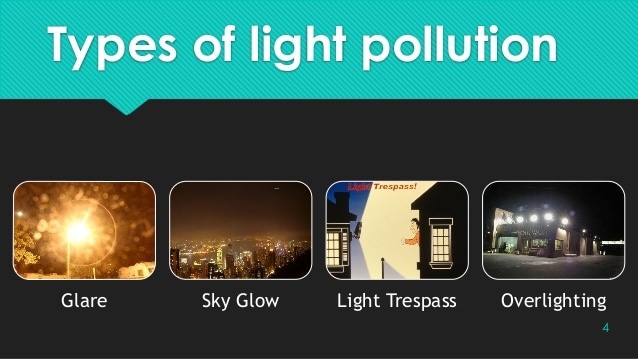Light Pollution
Context:
- Skyglow forces dung beetles in the city to abandon the Milky Way as their compass.
What is Light Pollution?
- It is excessive, misdirected, or obtrusive artificial (usually outdoor) light.
- Too much light pollution has consequences:
- it washes out starlight in the night sky
- interferes with astronomical research
- disrupts ecosystems: Change in night brightness would affect animals that rely on the sky as their compass. Their sensitive eyes can be blinded by bright city lights. The disappearance of stars from the night sky can cause them to lose their way.
- has adverse health effects and wastes energy.
What causing light pollution?
- Increasing urbanisation and the installation of new streetlights
- security floodlights and outdoor ornamental lighting.
Types of Light Pollution:

- Glare from unshielded lighting is a public-health hazard. Glare light scattering in the eye causes loss of contrast, sometimes blinds you temporarily and leads to unsafe driving conditions, for instance.
- Light trespass occurs when unwanted light enters one’s property.
- Skyglow refers to the glow effect that can be seen over populated areas. Skyglow is the combination of all the reflected light and upward-directed (unshielded) light escaping up into the sky.
Solutions exist
- Simple solution is turning off unnecessary lights at night.
- Where lights cannot be turned off, they can be shielded so that they do not shed light into the surrounding environment and sky.
- using energy efficient bulbs, and by using bulbs with appropriate spectral power distributions for the task at hand.
https://www.downtoearth.org.in/news/wildlife-biodiversity/skyglow-forces-dung-beetles-in-the-city-to-abandon-the-milky-way-as-their-compass-78217



1.png)
